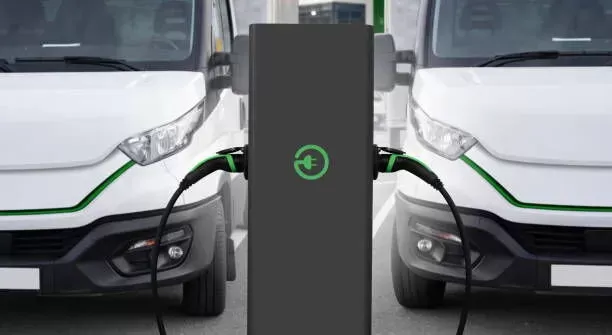Notifications

7 minutes, 37 seconds
-28 Views 0 Comments 0 Likes 0 Reviews

As a leading EV charger manufacturer in China, LiCB Charge delivers dependable AC and DC electric vehicle charging stations along with comprehensive charging solutions.
As electric vehicle (EV) adoption continues to grow worldwide, the demand for efficient and reliable charging infrastructure becomes increasingly critical. One of the most essential components of this infrastructure is EV charging load management—a system that optimizes the distribution of electrical power across multiple charging stations. Load management ensures grid stability, enhances energy efficiency, and provides a seamless experience for EV users. This article explores the concept, types, benefits, and operation of EV charging load management and its role in supporting the expanding EV ecosystem.
EV charging load management is the intelligent control and allocation of electrical power across multiple EV charging stations. As EVs consume substantial amounts of electricity, unregulated charging can strain the power grid, potentially leading to instability, higher energy costs, and even outages. Load management systems help mitigate these issues by allocating power strategically—taking into account real-time demand, grid capacity, and user priorities.
By balancing the load across chargers, these systems not only ensure efficient power use but also help maintain grid reliability, especially during peak demand periods. This makes EV charging more sustainable and accessible for users and providers alike.
There are two primary types of load management in EV charging networks: Static Load Management and Dynamic Load Management. Each serves different operational needs.
Static load management uses preset limits to distribute power equally among charging stations. For example, if a charging facility has a 100 kW total capacity with four charging units, each unit might be allocated 25 kW.
Advantages: Simple to implement, ideal for small-scale setups with predictable energy demand.
Limitations: Inflexible—unused power from idle chargers cannot be reassigned, leading to potential inefficiencies.
This approach is best suited for environments with consistent and stable power requirements.
Dynamic load management is more sophisticated. It continuously monitors power consumption and adjusts distribution in real time using algorithms and smart systems. Power is allocated based on live demand, grid load, and charger activity.
Advantages: Highly efficient and flexible; ensures optimal energy use.
Use Cases: Best for larger facilities with fluctuating EV usage, such as public stations or commercial fleets.
Dynamic systems can redirect power from idle chargers to active ones, prioritize users, and even adjust based on external grid signals.
Implementing a robust EV charging load management system provides numerous advantages for both operators and users:
Load management helps prevent grid overload by balancing energy consumption across chargers, significantly reducing the risk of blackouts and brownouts.
By avoiding peak energy usage and minimizing demand charges, operators can lower electricity bills. It also reduces the need for expensive infrastructure upgrades.
Efficient power distribution prevents overloading, overheating, and excessive wear on charging components—leading to lower maintenance costs and longer operational life.
EV drivers benefit from reliable and responsive charging access, even during high-usage times. Load management ensures stations remain operational and charging is equitable.
Load management enables better integration with renewable energy sources (e.g., solar, wind) by aligning charging activity with green energy availability, reducing dependence on fossil fuels.
EV charging load management systems are built on a blend of smart hardware and intelligent software. Here’s how they function step by step:
Sensors and meters collect data on energy consumption at each charging point. These metrics include:
Power drawn per charger
Total site load
Electrical parameters like voltage and current
This real-time monitoring is the foundation of efficient power management.
Collected data is transmitted to a central management system using protocols like OCPP (Open Charge Point Protocol). This communication enables:
Centralized control and status updates
Grid condition monitoring
Inter-charger coordination for balanced load sharing
Based on collected data, the system adjusts power output:
Static Management uses preset values to cap charger output.
Dynamic Management recalibrates in real-time—redistributing unused capacity and prioritizing high-demand users or reducing power if the grid is under stress.
Advanced systems incorporate predictive algorithms that analyze historical usage and anticipate future demand. These systems can:
Pre-load charging before peak times
Synchronize with renewable energy surges (e.g., sunny days for solar)
Optimize charging schedules for maximum efficiency
Smart EV charging load balancing is not just about technical efficiency—it directly impacts user satisfaction, site profitability, and sustainability goals. Here's why it matters:
Prevents grid overloads and downtime
Ensures vehicles are fully charged on schedule
Maximizes use of available electrical capacity
Reduces operational costs through energy optimization
Provides alerts to users if delays or undercharging may occur
By embracing load balancing, providers can offer more reliable and scalable charging services.
EV charging load management is a cornerstone of scalable and sustainable EV infrastructure. It ensures stable grid operation, minimizes costs, and delivers a high-quality charging experience. As EV adoption accelerates, the demand for intelligent, flexible load management solutions—particularly dynamic systems—will only grow. Whether implemented in residential, commercial, or public charging environments, load management plays a vital role in building a resilient and future-ready transportation ecosystem.Know more about Google SEO Directory
China EV Chargers EV Charger Manufacturer Smart EV Chargers Electric Car Chargers Electric Vehicle Chargers Electric Car Charging Stations

